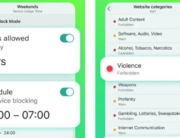TRID 101: Explained in Plain English – what you should learn about modifications to estate that is real
Although TRID seems like a creature you’d find in a technology fiction film, it is actually something which will benefit you — and never through any means that are diabolical. TRID is an acronym that stands for “TILA-RESPA incorporated Disclosure. ” a regulation that is federal it had been enacted to simply help protect customers as if you.
Whether you’re looking to purchase very first house when you look at the city or a 2nd house in the hills, you’ll run into a TRID from your own loan provider. You to spend a little time to learn the simple, basic facts about this integrated disclosure rule and how it will affect you so it behooves. Right Here then is just a primer in what you should know concerning the TRIDs.
Breaking It Down
The TRID ended up being made to help individuals purchasing a home that is new. Its, consequently, one thing you should know about if you’re considering a brand new house purchase. Let’s breakdown the title. “TILA-REPSA incorporated Disclosure” continues to be a mouthful. Examining each term in this moniker will assist explain precisely just what it’s and exactly exactly what it will:
• TILA
TILA is definitely an acronym that represents the facts In Lending Act. Passed away into federal legislation in 1968, the TILA protects consumers from unscrupulous creditors. The TILA forces lenders to reveal their terms — interest, total expenses and period of the mortgage — for you before you signal the mortgage contract. It introduced the waiting that is three-day, during which you yourself can cancel the contract without penalty. Which also protects customers from high-pressure product sales methods.
• RESPA
RESPA is yet another acronym. It represents the actual Estate Payment Procedure Act. Enacted as a federal legislation in 1974, the RESPA provides comparable defenses whilst the TILA, but especially for real-estate deals. The standardized Good Faith Estimate (GFE) you received in previous estate that is real — detailing the expense and regards to your loan — originated in the RESPA. This legislation has conserved homebuyers vast amounts of bucks whilst it’s been in place.
• Integrated
The TRID integrates both the TILA while the RESPA into one brand new guideline, so you may state it puts the very best virginiacashadvance.com login of both globes (or laws and regulations) into one. One other way the TRID is incorporated is the fact that it combines numerous statements into two papers. Both of these statements are disclosures, therefore let’s glance at that word…
• Disclosure
A disclosure is information provided or revealed. When it comes to property deals, a disclosure from the lender reveals the total regards to your contract to borrow cash for home financing. A disclosure could be complex, listing all the expenses and charges you need to pay to summarize your loan, the length of time you need to pay the loan back as well as exactly exactly exactly what portion. A disclosure is just a lawfully binding document and it is legally needed during a genuine estate deal, therefore yes, it is crucial, both to you personally therefore the loan provider.
What’s the TRID Difference?
Right now, you need to recognize that the TILA and RESPA involved disclosures from loan providers or creditors to borrowers. Within the past, homebuyers had been given multiple disclosures at different times along the way. You have a GFE and a TILA disclosure when you initially sent applications for home financing loan. You received A hud-1 settlement declaration and one last TILA disclosure at your closing. Confusing, is not it?
At the time of October 3, 2015, you’ll only see two integrated disclosures:
1. The Mortgage Estimate (LE)
2. The Closing Disclosure (CD)
The LE disclosure that is integrated the GFE while the TILA disclosures. The CD integrated disclosure replaces the HUD-1 and also the last TILA disclosures. Therefore the TRID means less documents for you personally. And both the LE while the CD are likewise organized, making them more straightforward to compare and comprehend.
You Receive More Hours, Too
Besides getting numerous, various and confusing types from your own loan provider during previous loan requests, the procedure offered you very little time to truly learn the disclosures. For instance, you’re served with the HUD-1 settlement declaration at your closing. That didn’t offer you time that is much search for mistakes and omissions.
Underneath the TRID rule, you will get time included in the procedure to examine the built-in disclosure types. The TRID process gives you the time you need to make sure you understand and agree with the terms of your contract along with the other safeguards.
The LE and CD Timeline
As an example, you have to have the LE within 3 days of obtaining your loan. That provides you time and energy to review it — and potentially compare it into the same form that is LE other loan providers. That’s essential because by comparing LEs, you can view all of the costs and costs of each and every loan provider hand and hand.
You want to buy and negotiate a price, you and your representatives (real estate agent, lender and attorney) work toward closing the loan after you choose a lender, find the property. The lending company must deliver you the CD at the least 3 days before your closing. Enough time provides you with the opportunity to examine the disclosure that is integrated, which details most of the expenses and all sorts of the regards to the mortgage. It’s your last possibility to be sure all things are precisely while you expected, as outlined for your needs by the loan officer.
TRIDs Save You Money And Time
These integrated disclosure forms don’t cost you anything extra in the final analysis. It’s the legislation, therefore lenders and solicitors must adhere to it. It’s on lenders to issue the disclosures that are new time and completed to your satisfaction.
TRIDs will save you cash because this simplified and built-in procedure makes it simpler for you to examine and compare disclosure types. The possibility that you’ll create a mistake or miss one thing essential was paid down. Incorporated disclosure kinds assist you to streamline your knowledge of the mortgage details in an even more form that is consumer-friendly.
The TRID is a typical example of federal federal government agencies attempting to make life easier for homebuyers. You could get documents, such as a user’s guide, that walks you through the TRID kinds in more detail. The buyer Financial Protection Bureau (CFPB) provides them, totally free. When you look at the meantime, contact Zack Adam of GoPrime Mortgage, Inc. For those who have certain concerns. He really loves homebuyers that are helping.






